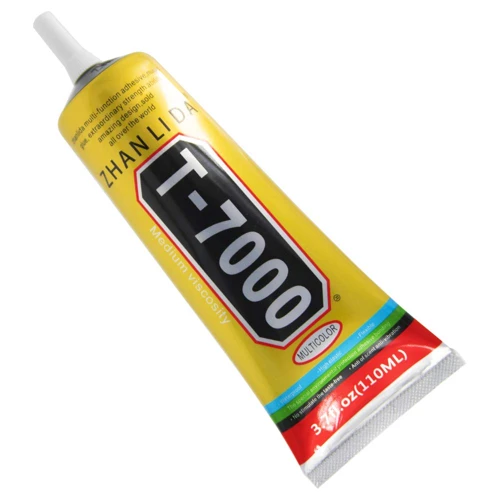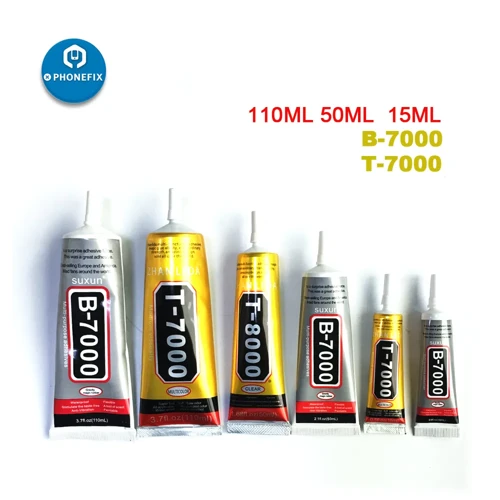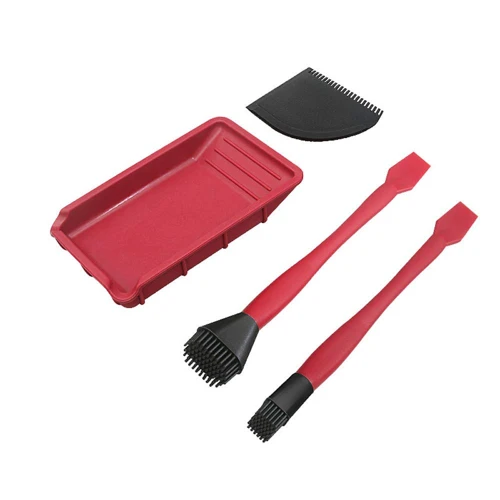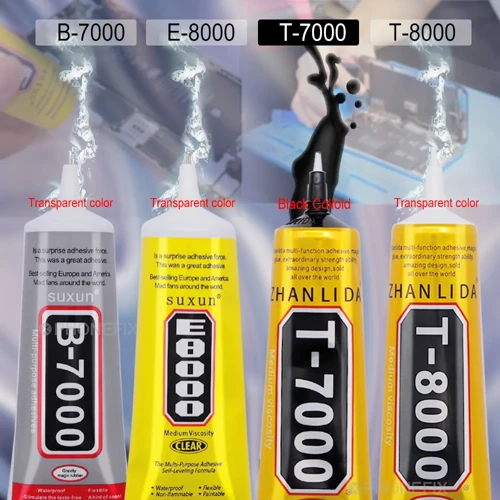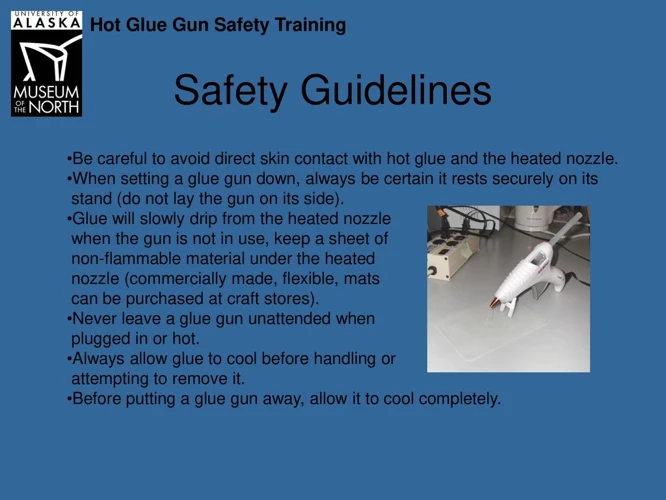You’ve just finished a DIY project using T7000 glue and are now left with the task of removing it. However, the strong bonding strength of this adhesive may have you scratching your head wondering where to even begin. Fear not, for we have compiled a comprehensive guide to help you easily remove T7000 glue from a variety of surfaces. From the tools and materials needed to safety precautions to take, we have got you covered. So, let’s dive into the world of T7000 glue removal and say goodbye to those stubborn remnants.
What is T7000 glue?
T7000 glue has become a popular adhesive choice for various projects due to its impressive bonding strength and versatility. This industrial-strength adhesive is commonly used in electronic device repairs, jewelry making, and other DIY projects. T7000 glue is well known for its strong binding characteristics, but unfortunately, removing it can be a daunting task. In this guide, we will explore the properties of T7000 glue and provide you with comprehensive and effective techniques to remove it from various surfaces such as electronics, wood, glass, metal, and plastic. So, let’s dive in and learn more about this powerful adhesive! If you need to remove other types of glue, check out our article on what breaks down glue.
How is it used?
T7000 glue is a type of industrial-strength adhesive that is commonly used in electronic and mobile device repairs, as well as in creating jewelry and other crafts. It is ideal for bonding materials that have different coefficients of thermal expansion, and for creating high-strength seals that can withstand exposure to water or other elements. T7000 glue has a relatively long curing time, which allows for some re-positioning and adjustment of parts before the bond becomes permanent.
Table: Different types of surfaces that T7000 glue can be applied to
| Surface Type | Description |
|---|---|
| Plastics | T7000 glue is compatible with a wide range of plastics, including ABS, polycarbonate, and PVC. |
| Metal | It can be applied to metals such as aluminum, brass, copper, and stainless steel. |
| Ceramics | The adhesive can bond to ceramics such as porcelain, terra cotta, and earthenware. |
| Leather and fabrics | T7000 glue is also used to bond leather and fabrics like cotton and silk. |
Although T7000 glue is mainly used for industrial and professional purposes, it can also be used for DIY repairs and crafting projects. It’s important to note that T7000 glue should always be used in a well-ventilated area, and the surfaces to be bonded should be clean and free of any dust or debris for best results. Additionally, you should be aware that the glue will take several hours to dry and set, and should not be moved during that time.
It’s recommended to use gloves when working with T7000 glue, as the adhesive can be difficult to remove from skin. If you do get glue on your skin, do not pull it off, as this can cause injury. Instead, use a solvent like acetone or isopropyl alcohol to dissolve the glue and gently remove it. You can learn more about how to remove glue from different surfaces by checking out our articles on how to remove Bostik glue from wood floor and how to remove hot glue from ceramic.
What surfaces does it work on?
T7000 glue is known to work on a variety of surfaces, making it a popular choice for many different applications. Its versatility is due to its ability to adhere to both porous and non-porous materials. Here is a table that lists some of the common surfaces that T7000 glue can be used on:
| Surface | Notes |
|---|---|
| Plastic | T7000 glue is highly effective in bonding plastic materials together. |
| Metal | It can bond metals such as aluminum, stainless steel, copper, brass, and other metals. |
| Glass | It is commonly used to bond glass materials such as windows, lenses, and screens. |
| Wood | The glue is also effective in bonding wood materials, including plywood, particle board, and MDF. |
| Rubber | T7000 glue can bond different types of rubber, including neoprene, silicone, and natural rubber. |
It is important to note that T7000 glue may not be effective on some surfaces, such as fabrics and certain types of plastics. In such cases, it is advisable to use a different type of adhesive that is designed for those specific materials.
If you need to remove T7000 glue from any of the above surfaces, refer to this article’s later sections, particularly the methods section. In case you need to remove some other type of glue, you may find these articles helpful as well:
how-to-get-glue-off-subfloor,
how-to-get-glue-trap-off-cat,
how-to-remove-polyurethane-glue,
how-to-remove-super-glue-from-aluminum,
how-to-remove-bostik-glue-from-wood-floor,
how-to-get-glue-off-lenses,
how-to-get-fly-trap-glue-off-wall,
how-to-get-glue-off-couch, and
how-to-remove-hot-glue-from-ceramic.
Why is T7000 glue so difficult to remove?
Trying to remove T7000 glue can be a real headache. The stubbornness of this adhesive can leave you feeling perplexed and frustrated. It seems like no matter what you do, the glue just won’t budge. Understanding why T7000 glue is so difficult to remove can help you develop effective strategies for removing it. There are a few key factors at play that make this adhesive such a formidable opponent. From the strength of the adhesive to the surfaces it adheres to, there are a number of reasons why T7000 glue can be such a pain to remove. In the next sections, we will explore these factors in more detail so that you can better understand the challenges of removing T7000 glue.
The strength of the adhesive
T7000 glue is known for its exceptional strength, which is one of the reasons why it is so difficult to remove. This industrial-strength adhesive is designed to create a strong and permanent bond, which means that once it sets, it can be incredibly challenging to remove. Here are some points that shed light on the strength of T7000 glue:
- High tensile strength: T7000 glue has a high tensile strength, meaning that it can withstand forces that pull it apart without breaking. This makes it ideal for use in demanding applications, such as in the electronics industry.
- Water-resistant: This glue is resistant to water, which means that it can maintain its strength even in moist conditions. It is also resistant to heat and cold, making it suitable for use in different environments.
- Flexible: The flexibility of T7000 glue is another feature that contributes to its strength. It has a high degree of elasticity, which allows it to bend and flex without breaking. This makes it perfect for use in materials that expand and contract, such as rubber and plastic.
- Long-lasting bond: The bond created by T7000 glue is strong and long-lasting. The adhesive can remain effective for several years, providing a reliable hold that is resistant to wear and tear.
With such impressive features, it is clear why T7000 glue is such a popular adhesive. However, when it comes to removing it, the strength of the glue can be a challenge. It often requires special tools and techniques to break the bond and safely remove the glue without damaging the surface it has adhered to.
The type of surfaces it adheres to
T7000 glue is known for its strong adhesive properties, which makes it difficult to remove from certain surfaces. The type of surface that it adheres to also plays a key role in its strength. Here’s a breakdown of different surface types and how T7000 glue interacts with them:
| Surface Type | Adhesion |
|---|---|
| Metal | T7000 glue works well on metal surfaces such as aluminum and stainless steel. Its strong adhesive properties allow it to stick to these surfaces firmly, making it difficult to remove. |
| Glass | T7000 glue also adheres well to glass surfaces. However, it is important to note that it may not be suitable for certain types of glass, such as tempered or safety glass. |
| Plastic | T7000 glue can be used on plastic surfaces, but it is important to choose the right type of plastic. Some plastics may not be compatible with the glue, which can result in weak adhesion or damage to the plastic itself. |
| Ceramic | Ceramic surfaces can be a bit more challenging to work with when using T7000 glue. The glue tends to adhere well to ceramic surfaces, but can be difficult to cleanly remove due to the porous nature of the material. |
| Fabric | While T7000 glue can be used on fabric surfaces, it may not be the best option. The adhesive can easily seep through the fabric, resulting in unwanted stains or discoloration. |
When working with T7000 glue, it is important to consider the type of surface it will be applied to. Knowing which surfaces are compatible with the glue can help ensure optimal adhesion and make the removal process less challenging.
The drying time of the glue
One of the reasons that T7000 glue is so difficult to remove is due to its drying time. T7000 glue is known to have a relatively long drying time, which can be up to 24 hours, depending on the temperature and humidity of the environment.
During the drying process, the glue undergoes a chemical reaction that causes it to harden and bond to the surface. This chemical reaction is irreversible, which means that once the glue has dried, it cannot be removed by simply pulling it off.
Additionally, if the glue is not allowed to dry completely, it can be more difficult to remove because it will still be in a sticky, semi-liquid state. This can make it harder to manipulate and control, as well as more likely to spread to other surfaces unintentionally.
To properly remove T7000 glue, it is important to wait until the glue has fully dried before attempting to remove it. If the glue is not fully dry, it may be helpful to use a fan or other means to help speed up the drying process.
Some tips to keep in mind regarding drying time of T7000 glue include:
- Be patient and wait for the glue to dry fully before attempting to remove it.
- Avoid applying excessive heat or pressure to the glue during the drying process, as this can cause the glue to spread or become more difficult to remove.
- If the glue is not fully dry, try using a fan or other means to speed up the drying process.
- Always follow the manufacturer’s instructions regarding recommended drying time for the specific type of T7000 glue being used.
By understanding the drying time of T7000 glue and taking proper precautions, it is possible to safely and effectively remove this adhesive from a variety of surfaces.
Tools and Materials Needed
In order to successfully remove T7000 glue, you’ll need to gather a few essential tools and materials beforehand. Having the right equipment on hand will make the process much smoother and easier.
Acetone: A common ingredient found in nail polish remover, acetone is essential when removing T7000 glue. It helps break down the adhesive properties of the glue, making it easier to remove.
Isopropyl Alcohol: This is another popular choice for removing T7000 glue. Isopropyl alcohol is known for its ability to dissolve adhesives and is gentle enough to use on a variety of surfaces.
Heat Gun: A heat gun can be used to soften the glue so that it can be easily peeled off. A hair dryer can also be used if a heat gun isn’t available.
WD-40: This is a popular and effective option for removing T7000 glue. WD-40 is a lubricant that can help dissolve the adhesive properties of the glue.
Commercial Adhesive Remover: If you’re looking for a stronger solution, a commercial adhesive remover may be the way to go. There are many different brands available, so be sure to choose one that is safe for the surface you’re working on.
Razor Blade: If all else fails, a razor blade can be used to carefully scrape off the glue. This method can be risky, so use caution and make sure not to damage the surface you’re working on.
In addition to these tools and materials, you’ll also need a few basic items such as gloves, a cloth, and a scraper. Having these essentials on hand will help ensure that you’re able to remove the T7000 glue safely and effectively.
Methods for Removing T7000 Glue
Removing T7000 glue can be a challenging task, but there are several methods that can make the process easier. In this section, we will discuss different ways to remove T7000 glue from various surfaces. Whether you opt to use acetone, heat, isopropyl alcohol, WD-40, a commercial adhesive remover, or a razor blade, it’s important to take the proper safety precautions and follow the correct techniques to ensure a successful removal. Let’s dive into these methods and explore the pros and cons of each one.
Method 1: Using Acetone
To remove T7000 glue using acetone, you will need the following materials:
- Acetone: You can find it in most hardware stores or beauty supply stores.
- Gloves: To protect your skin from the harsh chemicals in the acetone.
- Cotton swabs: For applying the acetone to the glue.
- Scraping tool: To scrape off the glue once it has softened.
Here are the steps you need to follow:
- Put on your gloves to protect your skin.
- Apply a generous amount of acetone to the T7000 glue using a cotton swab. Make sure the entire area is covered with acetone.
- Let the acetone sit on the glue for at least 10 minutes. This will allow the acetone to penetrate the glue and break down its chemical bonds.
- Use a scraping tool to gently scrape off the softened glue. Be careful not to scratch or damage the surface underneath.
- If there is still some residue left, apply another layer of acetone and repeat the process until all the glue is removed.
Safety Precautions:
- Acetone is a highly flammable and volatile chemical, so make sure you are working in a well-ventilated area.
- Keep the acetone away from any heat sources or flames.
- Acetone can irritate the skin and cause respiratory problems if inhaled, so wear gloves and a face mask if necessary.
Tips and Tricks:
- If you don’t have acetone on hand, you can also use nail polish remover, which contains a similar chemical called ethyl acetate.
- If the glue is particularly stubborn, you can also try soaking the affected area in acetone for a few hours before scraping it off.
- After removing the glue, clean the surface with soap and water to remove any leftover residues.
Conclusion:
Using acetone to remove T7000 glue can be an effective solution for breaking down its strong bonds. However, make sure to take the necessary safety precautions and follow the steps carefully to avoid damaging the surface underneath.
Method 2: Using Heat
Method 2: Using Heat
Using heat is another effective method for removing T7000 glue. The heat helps to soften the glue, making it easier to scrape off. However, this method should be used with caution as excessive heat can damage the surface the glue is attached to.
Here are the steps to follow:
| Materials Needed | Tools Needed |
|---|---|
| – Hair dryer or heat gun | – Razor blade |
1. First, plug in the hair dryer or heat gun.
2. Hold it about 2 to 3 inches away from the surface with the T7000 glue.
3. Turn on the heat to the highest setting and aim it at the glue.
4. Hold the heat gun or hair dryer in place for no more than 30 seconds at a time.
5. Use the razor blade to gently scrape the glue off the surface while it’s still warm.
6. Repeat the process until all the T7000 glue is removed.
Safety Precautions: Make sure that you wear gloves while performing this method as the surface and the glue will be hot. Always follow the manufacturer’s instructions when using a heat gun or hair dryer. Additionally, be careful not to burn or melt the surface you’re working on.
Tips and Tricks: Using a heat gun is more effective than a hairdryer because it can provide a higher temperature, making the glue easier to remove. It’s also recommended to use a metal scraper instead of a razor blade if the surface you’re working on is delicate. Lastly, after the glue has been removed, clean the surface thoroughly with soap and water.
Method 3: Using Isopropyl Alcohol
Isopropyl alcohol, also known as rubbing alcohol, is a common household item that can be used for removing T7000 glue. Here is a step-by-step guide on how to use isopropyl alcohol for removing T7000 glue:
Materials Needed:
- Isopropyl alcohol
- Cotton swabs
- Protective gloves
Steps:
- Put on protective gloves to avoid direct contact with the alcohol.
- Saturate a cotton swab with isopropyl alcohol.
- Apply the isopropyl alcohol directly onto the T7000 glue. Allow it to sit for a couple of minutes.
- Use a clean, dry cloth to wipe away the glue.
- If the glue is still not completely removed, repeat the process.
Important Safety Precautions:
- Isopropyl alcohol is highly flammable, so it is important to avoid exposing it to heat or flames.
- Always use protective gloves when handling isopropyl alcohol as it can be harsh on the skin.
- Make sure to use isopropyl alcohol in a well-ventilated area to avoid inhaling the fumes.
Tips and Tricks:
- If the glue is on a small area, you can use a toothbrush instead of a cotton swab to help scrub away the glue.
- Isopropyl alcohol can also be used to clean off any residue left behind by the commercial adhesive removers.
Isopropyl alcohol is an effective and budget-friendly option for removing T7000 glue. However, it is important to follow the safety precautions and use it in a well-ventilated area. If the glue is particularly stubborn, you may need to try some of the other methods listed in this article.
Method 4: Using WD-40
One effective method for removing T7000 glue is by using WD-40. Here are the steps to follow:
- Apply WD-40 onto the glue residue.
- Let the WD-40 sit for a few minutes to allow it to penetrate the glue.
- Using a clean cloth, wipe away the glue residue.
- If the glue is stubborn and won’t come off easily, apply more WD-40 and let it sit again.
- Keep wiping until all the glue residue is removed.
WD-40 is a popular lubricant that is also known for its ability to dissolve adhesives. When used on T7000 glue, it can help to break down the adhesive and make it easier to remove.
It’s important to note that WD-40 is a flammable liquid and should be used with caution. Avoid using it near an open flame and make sure to use it in a well-ventilated area. In case of skin contact or ingestion, seek professional medical attention immediately.
Using WD-40 can be an effective method for removing T7000 glue if done with the proper safety precautions.
Method 5: Using a Commercial Adhesive Remover
When it comes to removing T7000 glue, using a commercial adhesive remover is another option. These products are specifically designed to break down and dissolve strong adhesives, including T7000. Here is a breakdown of what you need to know about using a commercial adhesive remover:
Step 1: Choose a commercial adhesive remover that is safe for use on the surface you need to remove the T7000 glue from. The packaging will typically specify which surfaces the product is safe for.
Step 2: Apply the adhesive remover directly onto the T7000 glue and let it sit for the amount of time recommended on the packaging. This can be anywhere from a few minutes to an hour, depending on the product.
Step 3: Use a scraper or old toothbrush to gently scrub away the softened glue. Be careful not to damage the surface underneath.
Step 4: Repeat Steps 2 and 3 as needed until all of the T7000 glue is removed.
It’s important to note that commercial adhesive removers can be harsh chemicals, so always use the product in a well-ventilated area and wear gloves to protect your skin. And just like with any chemical product, be sure to read the instructions and warnings thoroughly before use.
Pros:
- Commercial adhesive removers are specifically designed to break down strong adhesives like T7000.
- They can be effective and efficient in removing the glue.
- They are readily available at most hardware or home improvement stores.
Cons:
- Some commercial adhesive removers can be harsh chemicals, so proper safety precautions should be taken.
- There is a risk of damaging the surface underneath the glue if not used carefully.
- They can be expensive compared to other removal methods.
Using a commercial adhesive remover can be a good option for removing T7000 glue from a variety of surfaces. Just be sure to choose a product that is safe for use on your particular surface and follow the instructions carefully to avoid damaging the area or exposing yourself to any harmful fumes.
Method 6: Using a Razor Blade
When dealing with strong adhesives like T7000, sometimes the only way to remove it from a surface is by using a razor blade. However, the effectiveness of this method largely depends on the type of surface the adhesive is stuck to. Using a razor blade may not be the best option for delicate surfaces such as plastics or soft metals as it can scratch or damage the surface. It’s important to exercise caution when using this method as it involves sharp objects that can cause injury. Here’s how to safely use a razor blade to remove T7000 glue:
| Materials Needed | Steps |
|---|---|
| Razor blade |
|
Remember to always exercise caution when using a razor blade to avoid injury. If you are unsure about using this method, it may be best to consult a professional or try one of the other methods listed.
Safety Precautions
Handling T7000 glue requires some safety precautions to prevent any potential mishaps or accidents. Here are a few things to keep in mind before you start removing T7000 glue:
1. Proper Ventilation: Whether you are working indoors or outdoors, you should ensure that the work area is well ventilated. This will help prevent the buildup of harmful fumes from the solvents and chemicals you will be using to remove the glue.
2. Protective Clothing: Wear clothes that cover your arms and legs. You should also wear gloves to protect your hands from any harsh chemicals.
3. Eye Protection: It is advisable to wear protective goggles to protect your eyes from any chemicals or fumes that may accidentally splash onto your face.
4. Protective Mask: To avoid breathing in dangerous fumes, it’s suggested to wear a protective mask or respirator while using harsh chemicals such as acetone or WD-40.
5. Keep Children and Pets Away: It’s not safe for children or pets to be around chemicals, so keep them far away from your work area.
6. Read Product Labels: Before using any adhesive remover or solvent, read the product label carefully to find out about its safe handling and use.
7. Store Chemicals Safely: After you finish using the chemicals, make sure you store them safely in a well-ventilated, dry area away from direct sunlight and heat sources.
Taking these safety precautions will ensure that the process of removing the T7000 glue is done safely and efficiently. Make sure to take your time and follow the steps thoroughly to avoid any potential accidents or harm to yourself.
Tips and Tricks
If you want to make the process of removing T7000 glue as easy as possible, here are some tips and tricks that you can follow:
Use gloves: When handling T7000 glue, it’s important to wear gloves to protect your skin from the harsh chemicals. Nitrile or latex gloves are recommended.
Work in a well-ventilated area: The fumes from T7000 glue can be strong and potentially harmful, so it’s important to work in a well-ventilated area whenever possible. If you need to work indoors, consider opening a window or turning on a fan.
Start with the least aggressive method: Before using any of the more aggressive methods for removing T7000 glue, start with the least aggressive method first. This could be something as simple as warm water and soap.
Be patient: Removing T7000 glue can be a time-consuming process, especially if the adhesive is particularly stubborn. It’s important to be patient and not rush the process, as this could cause damage to the surface that you’re trying to clean.
Use a plastic scraper: If you need to use a scraper to remove the glue, make sure that it’s made of plastic. Metal scrapers can scratch and damage surfaces.
Rinse with clean water: Once you’ve successfully removed the glue, be sure to rinse the area with clean water to remove any remaining residue.
Dispose of chemicals properly: When you’re finished with the chemicals that you used to remove the glue, make sure to dispose of them properly. Follow the instructions on the packaging or contact your local waste disposal facility for guidance.
By following these tips and tricks, you can make the process of removing T7000 glue a little easier and less stressful. Always be sure to prioritize safety and take your time to get the best possible results.
Conclusion
In conclusion, removing T7000 glue can be a challenging task but is definitely doable with the right tools and techniques. It is important to keep in mind the strength of the adhesive, the type of surface it adheres to, and the drying time of the glue when determining the best method for removal.
Acetone, heat, isopropyl alcohol, WD-40, commercial adhesive remover, and a razor blade are all effective options for removing T7000 glue. However, it is important to use these methods with caution and to take the necessary safety precautions to avoid any harm or injury.
Always ensure that the tools and materials used are suitable for the surface being worked on, as the wrong material can cause damage. It is also important to take into account the environmental impact of the chemicals used in the removal process and to dispose of them in a safe and responsible manner.
In summary, removing T7000 glue may seem daunting, but with the right knowledge and tools, it can be easily accomplished. By taking the necessary precautions, selecting the appropriate method for your surface, and following the steps outlined in this guide, you can successfully remove T7000 glue and restore your surface to its original state.
Frequently Asked Questions
What is the drying time for T7000 glue?
The drying time for T7000 glue can range from 24 to 72 hours depending on the thickness of the application and the environmental conditions.
Can T7000 glue be used on plastic surfaces?
Yes, T7000 glue can be used on plastic surfaces and is known to have a strong bond with them.
Can T7000 glue be used on fabric?
Yes, T7000 glue can be used on fabric. However, it is important to ensure that the fabric is clean and dry before applying the glue.
Is T7000 glue waterproof?
Yes, T7000 glue is waterproof once it has fully cured.
Can T7000 glue be used on glass surfaces?
Yes, T7000 glue can be used on glass surfaces and is especially effective for bonding glass surfaces together.
What is the best way to remove T7000 glue from clothing?
The best way to remove T7000 glue from clothing is to use isopropyl alcohol. Apply the alcohol to the affected area and gently rub the glue off with a cloth or cotton swab.
What is the best way to remove T7000 glue from skin?
The best way to remove T7000 glue from skin is to wash the affected area with soap and warm water. If the glue is still present, use acetone or isopropyl alcohol to dissolve it.
Can T7000 glue be used for outdoor projects?
Yes, T7000 glue is suitable for outdoor projects as it is weather-resistant and can withstand exposure to sunlight, rain, and extreme temperatures.
What is the shelf life of T7000 glue?
The shelf life of T7000 glue is typically one year if stored properly in a cool, dry place, and with the cap tightly closed.
Can T7000 glue be painted over?
Yes, once T7000 glue has fully cured, it can be painted over using most types of paint.
